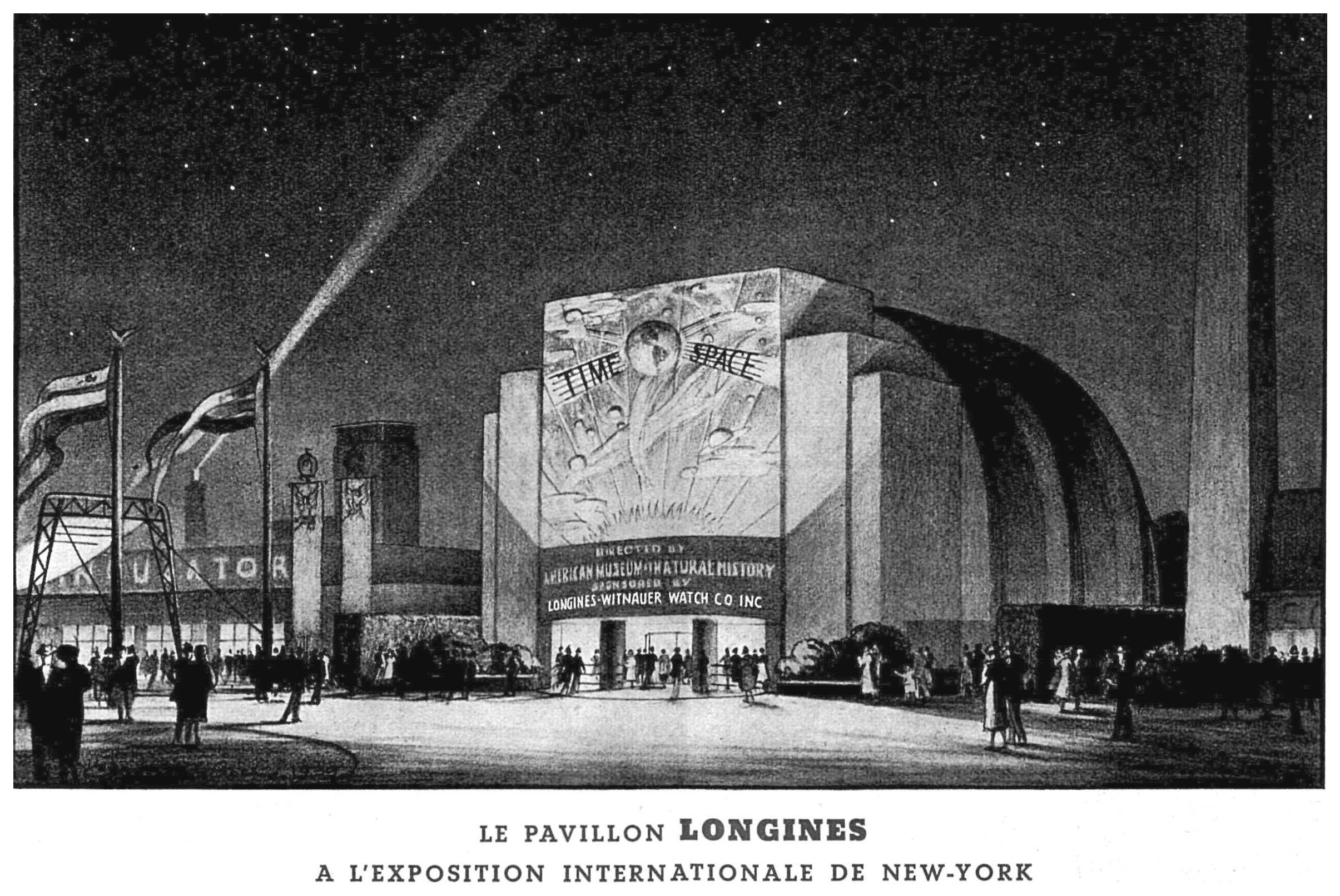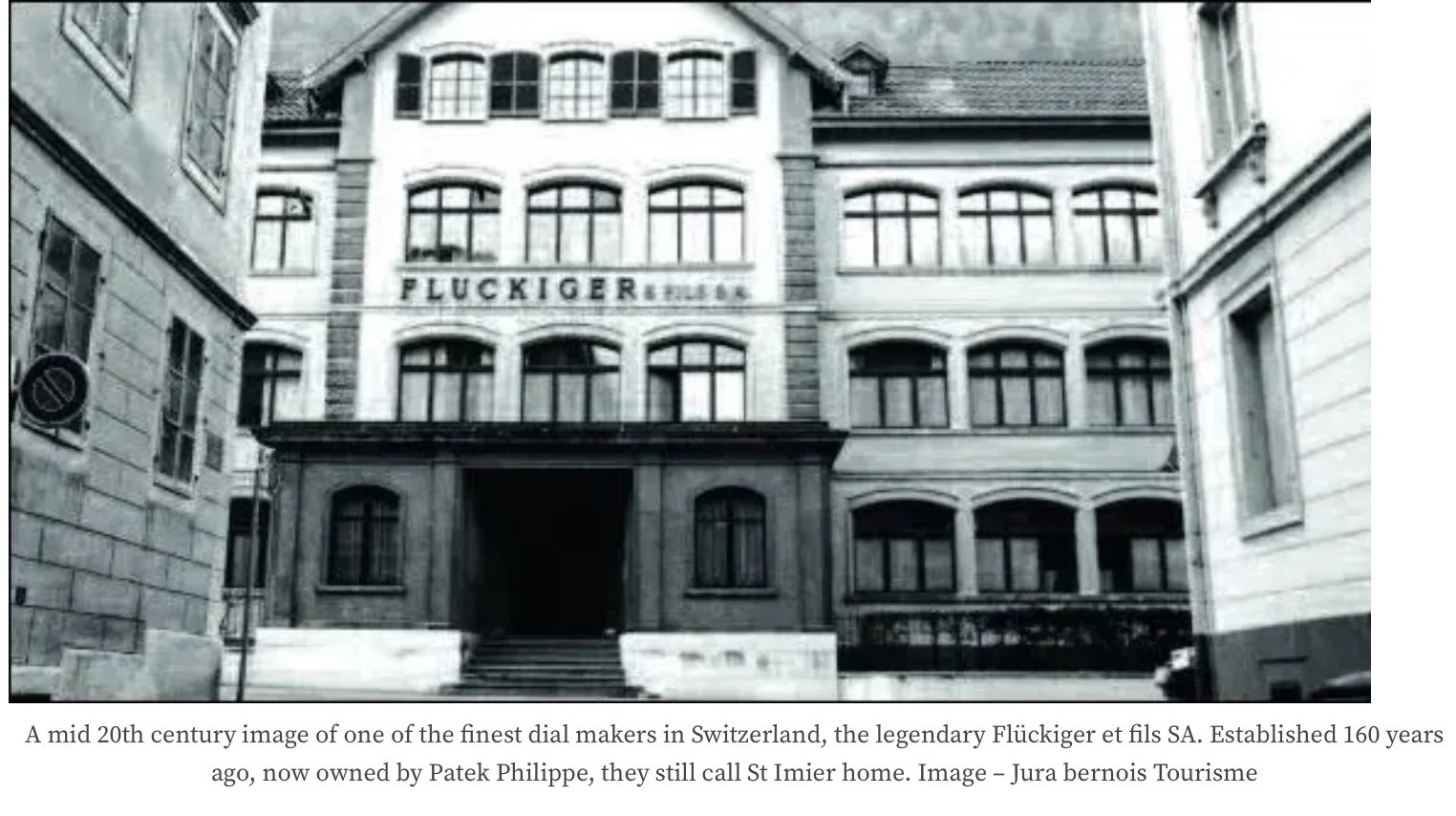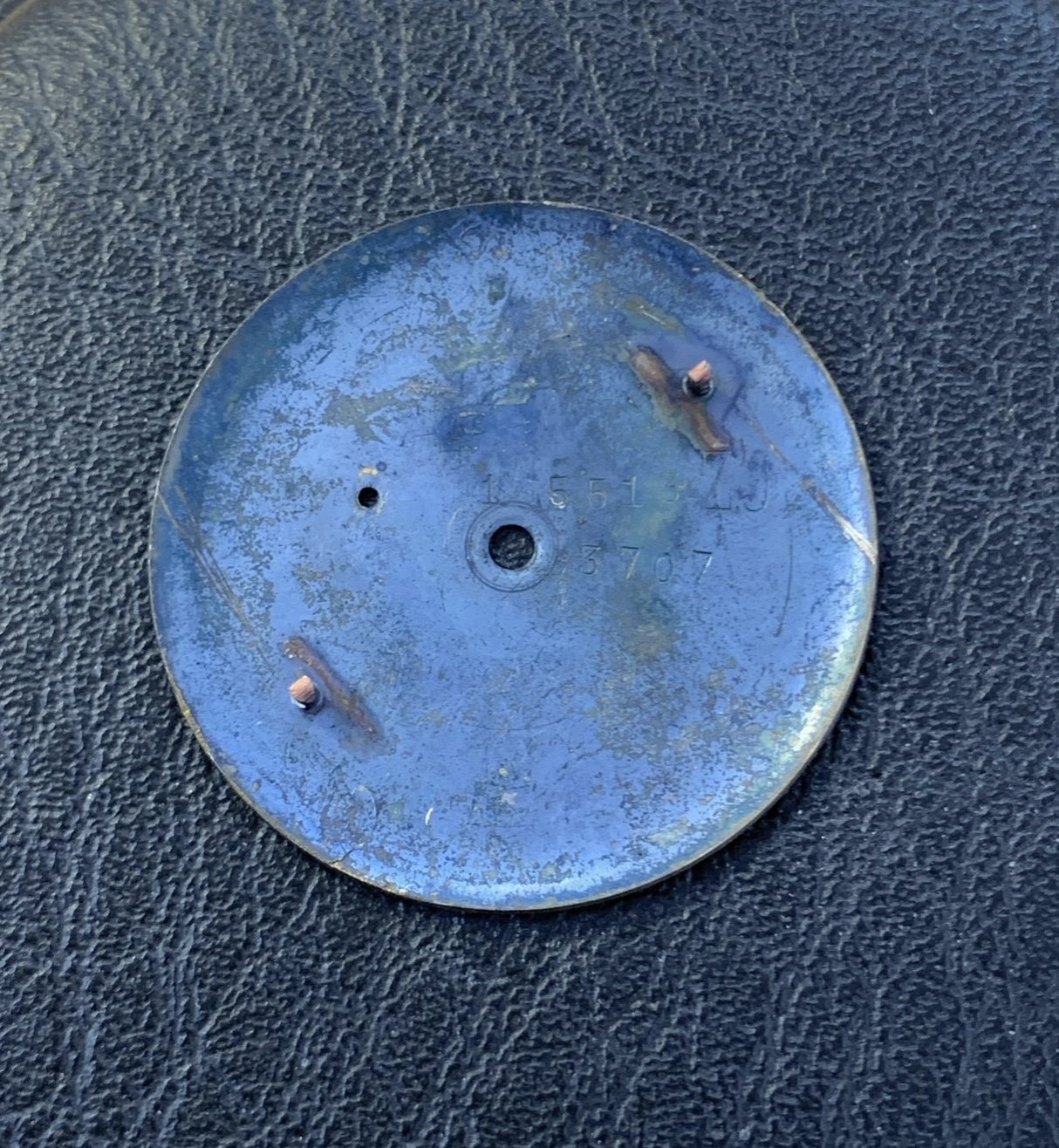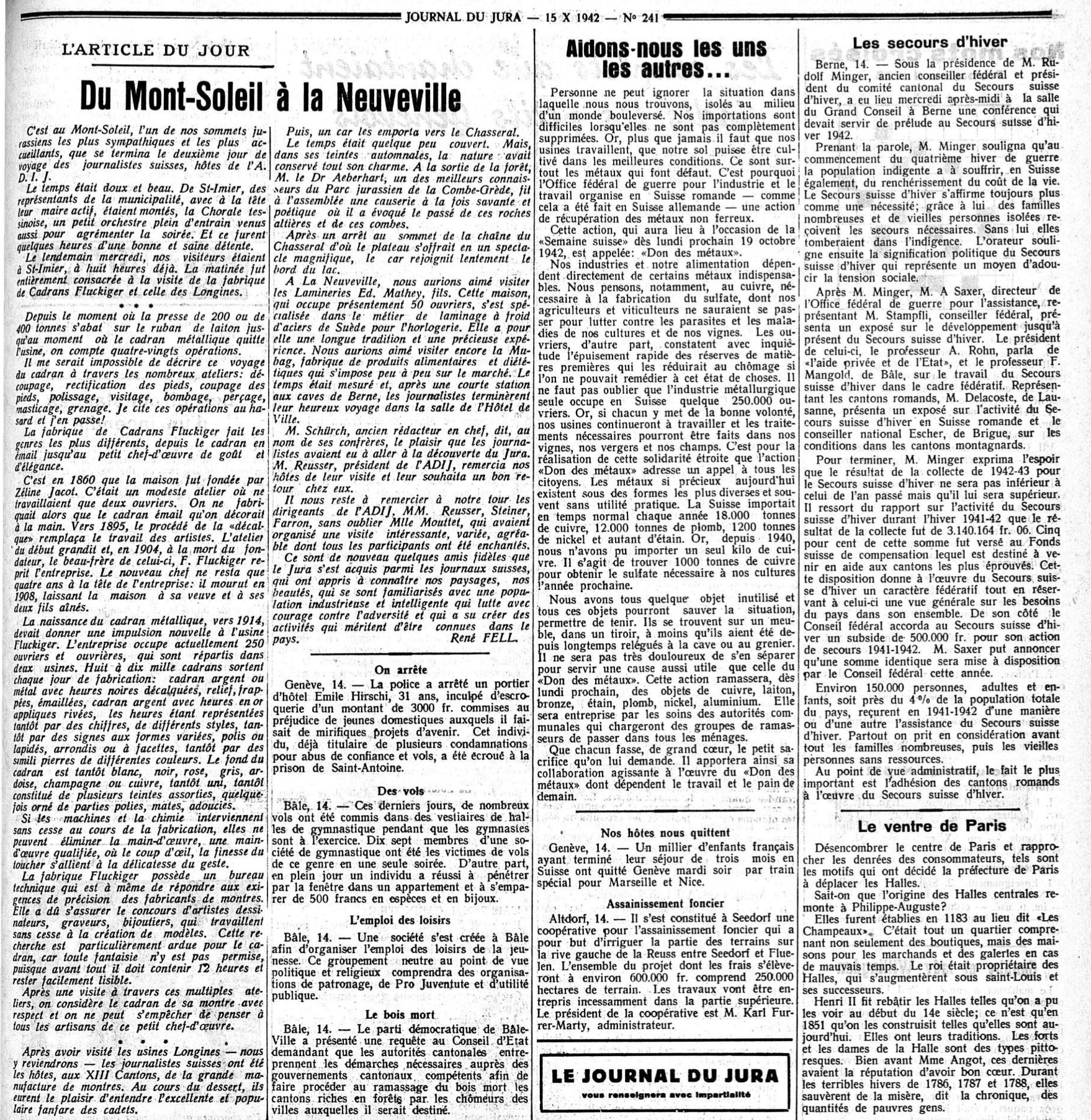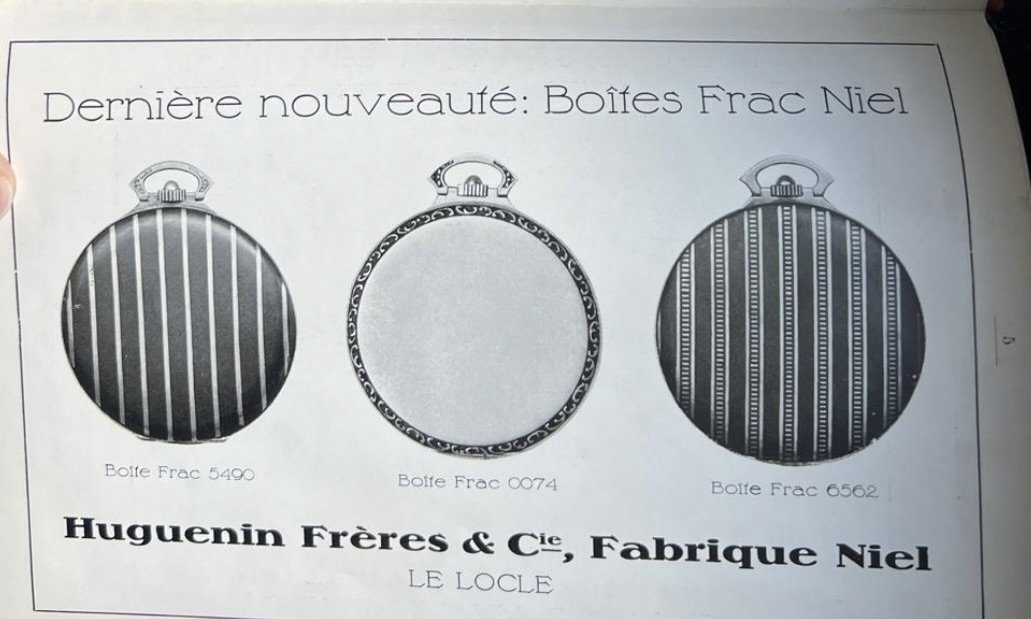The Blue Niello Longines Pocket Watches
By Charlie Dunne
Few watch manufacturers compare to Longines in the vintage period. I have yet to hear any vintage collector attribute their reputation to great marketing, or a single model line or design. Instead, collectors will cite Longines’ wide range of brilliant watches focus on performance and merit. Longines created the first flyback chronograph and had unrivaled technical achievements in aviation and avigation (Weems, Lindbergh, etc.). Longines was the preeminent manufacturer of chronometer-grade movements with various accolades at Observatory trials and World’s Fairs. The company also became the official timekeeper of the NFL during the 1950s. These are just a few highlights of why Longines remains one of the most storied watch brands.
Many of Longines’ timepieces are accompanied by great stories or at minimum some context to their origin via their Extracts - such as the case with my personal 1952 Winter Army Championships Longines reference 5356 or this Longines Sei Tacche Reference 5697 retailed By Türler that we sold in 2023.
While we may sell one vintage Longines for every 300+ watches, Eric Wind and I are both passionate enthusiasts of vintage Longines with a few great timepieces in our personal collections. It is not easy to find them and it seems very few that in exceptional condition find their way to the market. Perhaps this is because many Longines collectors covet these creations from St. Imier and if they sell a prized watch, it is often to those in the Longines collector community (as Eric was told at a Longines collector gathering in Switzerland in 2018 - “NO DEALERS ALLOWED!!”). Many collectors can attest to a wide spectrum of timepieces and genres from the manufacturer that are worth collecting. To summarize, Longines has one of the richest histories in the world of watchmaking.
Longines - Herpy Arnold sales brochure from 1930 (Hungarian). Image credit: www.vintagelongines.com
Longines manufacturer from 1942 newspaper.
While we were inspecting a vintage Longines that recently came into the office, Eric made a memorable comment as we drooled over the timepiece: “I mean, Longines did pocket watches better than pretty much everyone”. I agree. Yes, there are manufacturers that have a reputation for more complicated timepieces, and there are certainly brands that achieve monumental results above Longines’. Yet, as is the case for Patek Philippe, the pocket watches from Longines are outstanding and, in my view, tremendously undervalued. I find myself continually admiring high-quality vintage Longines pocket watches during my downtime, and in the lucky event that one comes across my desk, I am often awestruck. This article is dedicated to a recent acquisition of mine that was possible through the help of Eric. My Longines Blue Niello pocket watch.
Note: This article will not attempt to cover the entire landscape of production or variations within the Blue Niello Longines pocket watches (and is a bit different my Collector’s Guides: Rolex Submariner reference 5512 or steel Rolex GMT-Master reference 1675). Instead, it will hopefully provide insight and context of the category, as well as some variations found within the genre.
Longines Presents the History of Time exhibit, Planetarium, 1953. Image credit: digitalcollections.amnh.org
Longines Presents the History of Time exhibit, Planetarium, 1953. Image credit: digitalcollections.amnh.org
Longines pocket watch next to a Longines reference 5356 awarded at the 1952 Winter Army Championships.
The Dial
When I first saw this particular pocket watch a few years back, it immediately stood out because of its blue dial. By today’s standard, blue dials are often among the most exciting colors for collectors and these variants are often popular within a catalog. Yet seeing one from this era is a very radical and unusual - dare I say rare? - regardless of manufacturer. The trend toward blue became less infrequent by the late 1960s-1970s with more sporty and nautical wristwatches entering the picture. These are typically a matte blue dial or in some instances, like the Heuer Skipper reference 7754 (aka the “Skipperera) a blue soleil (sunburst) finish. However, this pocket watch was clearly much earlier, dating to the pre-mid-century and features a gilt, multi-tone dial that I have never seen outside of two Longines watches.
The dial features striking gold-foil like numerals seen in few special dials from this era. It incorporates radial formatted Arabic numerals and a two-toned gold sector layout. The base layer of the dial features a gold coating that was subsequently covered by an overlaid layer of blue paint. The numerals and sector layout is likely recessed from an electroplating technique within the dial production that adds the contrasting gold elements. This layer of gold can be seen bleeding through the snailed subdial that has darkened pockets due to the texture with the grooved sections showing the gold beneath. The flat surfaces retain this overlayed blue paint outside of small scratches.
Image credit: @vintagelongines
Image credit: @vintagelongines
Among the only other Longines watch I have seen with a similar blue dial was a reference 4687 belonging to @vintagelongines dating to 1942 and originally sent to Egypt. These dials were produced by Flückiger & Zie, the St-Imier dial manufacturer established by Zelim {Zéline} Jacot in circa 1860. The Jacot operation began as a humble workshop with only two employees (Journal du Jura, Number 241, 15 October 1942). According to Eric Tortella (Tortella & Sons) this manufacturer would be acquired by Flückiger family in circa 1904 and operated under 3 generations of the family. Under the Flückiger family’s tenure, the manufacturer employed over 450 individuals (orologeria.com). It would be operated by Paul-André until the later acquisition by Patek Philippe in 2004..
Zelim Jacot. Image credit: orologeria.com
Image credit: @vintagelongines
L'impartial, 23 January 1982
“ZJ, Flückiger et Fils SA: The management of the ZJ, Flùckiger et Fils SA group, in Saint-Imier, communicates: Since 1860, the date of the founding of our company, our activity has been the manufacture of quality dials. The directives given by the general management for 1982 are clear: - The primary vocation of the company is and will remain the manufacture of dials. The staff and equipment allow the creation of all types desired by our customers. This is our strong point and we place emphasis on it, i - Second objective: the development of diversifications which have been operational since 1980, namely: ZJ Electronic; precision hot stamping. Excellent business relations already exist between Fritz Gegauf AG - manufacturer of Bernina sewing machines in Steckborn and the ZJ group through hot stamping. In full expansion, and in need of space and personnel in Steckborn, the management of the Bernina house made the decision to entrust the ZJ group with the manufacture of very precise small mechanical parts for the sewing machine, the management of the ZJ group , Flùckiger et Fils SA, has decided that this manufacturing will be done in its Gousset factory and with the staff in place in Gousset. The contracts between the two houses were signed yesterday and the manufacturing of the Gousset dial will be gradually resumed in Saint-Imier as this new establishment progresses. We in Steckborn and SaintImier are delighted with the realization of the collaboration between a German-speaking Swiss company and a French-speaking company which have this in common: the quality of their products. This collaboration aims to develop both companies and we can only be happy about it,”
Journal du Jura, Number 241, 15 October 1942.
“It was at Mont-Soleil, one of our friendliest and most welcoming Jura summits, that the second day of travel for the Swiss journalists, hosts of the A, ended. The weather was mild and beautiful. From St-Imier, representatives of the municipality, led by their active mayor, had come, the Ticino Choir, a small orchestra full of enthusiasm also came to enhance the evening. And it was a few hours of good, healthy relaxation. The next day, Wednesday, our… visitors were in St-Imier, already at eight o’clock. The morning was entirely. dedicated to the visit to the Fluckiger Cadrans factory and. that of Longines. : ; He z, From the moment when the 200 or 400 ton press falls on the brass ribbon until the moment when the metal dial leaves: the factory, OR has eighty operations, It would be impossible for me to describe this journey of the dial through the numerous workshops: cutting, grinding of the feet, cutting of the feet, polishing, inspection, bending, drilling, puttying, graining. I cite these operations at random and so on! ; The Fluckiger Dial Factory makes the most different types, from enamel dials to small masterpieces of taste and elegance. { It was in 1860 that the house was opened by Zéline Jacot. It was a modest workshop where only two workers worked. At the time, only the enamel dial was manufactured and decorated by hand. Around 1895, the “decal” process replaced the work of the. artists. The workshop grew from the beginning and, in 1904, on the death of the founder, his brother-in-law, F, Fluckiger took over the company. The new boss only remained at the helm of the company for four years: he died in 1908, leaving the house to his widow and two eldest sons. { The birth of the metal dial, around 1914, was to give new impetus to the Fluckiger factory. The company currently employs 250 workers, who are spread across. two factories. Eight to ten thousand dials are produced each day: silver or metal dial with black transferred hours, relief, struck, enameled, silver dial with riveted applied gold hours, the hours being represented sometimes by numerals, in different styles, sometimes by signs with varied shapes, polished or stoned, rounded or faceted, sometimes with imitation stones of different colors. The bottom of the dial is sometimes white, black, pink, gray, slate, champagne or copper, sometimes plain, sometimes made up of several assorted shades, sometimes decorated with polished, matte, softened parts. -machines and chemistry intervene constantly during manufacturing, they cannot eliminate the skilled workforce, or the finesse of the work. touch combines with the delicacy of the gesture The Fluckiger factory has a technical office which is able to meet the precision requirements of watch manufacturers. who: work constantly on the creation of models This research is particularly arduous for the dial, because any fantasy is not permitted, since above all it must contain 12 hours and be easily readable: After a visit through. these multiple workshops, we consider the dial of our watch - with respect and we cannot help but spend money on the artisans of this little masterpiece. has * . . 7 After visiting the factories. Longines - we will come back to this - the Swiss journalists were the hosts, in the 13th Cantons, of the great watch factory. During dessert, they had the pleasure of hearing the excellent and popular fanfare of the cadets.”
The Blue Niello Case
The case is very distinct with decorative floral motifs and a blue framework. It is easy to misconstrue the case for rose gold, but it is fact silver produced with a technique known as blue niello. While I was not particularly familiar with it, I had seen similar examples within the Legendary Watches, Longines auction by Antiquorum held in Milan in 1994. There are a variety of Longines watches which typically date to pre-1930s with niello cases. The depictions include equestrian themes, birds, etc. However, most seem to align with the floral themes. I’ve noticed a number of examples that were sold in Cuba and other parts of America. Although it is just a presumption, I would lean towards thinking the Americas were the larger market for these watches. The case may have been produced by Huguenin Freres, as it seems Huguenin was a leader in the niello case production based on conversations with collectors and old advertisements from the early 1900s. While I can’t determine the Bear hallmark for silver’s Bureaux de Contrôle initial, it iappears to be either “I” (St. Imier) or possibly “L” (Le Locle) - Huguenin Freres’s origin. The bear hallmarks were designated for a guaranteed minimum of 0.870-0.875 silver.
FAN - L'express, 21 October 1925
FAN - L'express, 5 November 1953
“A great success for our watchmaking”
“The Swiss community of watch exhibitors obtained the highest award at the Decorative Arts in Paris. Here are the names of the houses in the Jura region which are part of this community: Brandt Louis et Frère, S. A "., (Oméga Watch Co), Bienne and Geneva. Ditisheim-Goldschmidt fils et Co, manufactures "Juvenia, La Chaux-de-Fonds: wristwatches, pendants and clocks Ditisheim Georges, La Chaux-de-Fonds: luxury clocks, island wood, lacquer, painted decorations, mantel clocks. , sculptor, La Chaux-de-Fonds, Ditisheim Henry, “Chevron” factory, La Chaux-de-Fonds: “Ebel” clocks, Blum et Co, La Chaux-de-Fonds: platinum wristwatches. Huguenin frères et Co “Niel” factory, Le Locle: cigarette cases, watch boxes, chatelaines, niello silver “Longines” factory, Saint-Imier: platinum wristwatches, pocket watches.”
Longines sales brochure from 1929 (French). Image credit: Peter’s Vintage Longines Watches.
As for how the niello cases were made, there is a nice summary by James Wolf:
"The niello watch case became a canvas for outstanding art works that will likely never be duplicated. The term niello comes from the Latin word nigellum that is the diminutive of niger (black.) It was a technique used by the ancient Greeks, Romans, Egyptians and Persians. Niello is a black or blackish-blue composition of lead, silver, copper, sulfur and ammonium chloride. The mixture is fused onto an engraved or cut-out metal base by firing the mix in a process similar to champleve' enameling. Silver was the most often used metal for niello objects since the soft white silver color contrasted beautifully with the darker niello. Rose-gold inlay work was also seen in combination with niello and tri-color effects were achieved by the use of rose-gold, niello and silver (Figure 1.) When the niello was heated and fired onto a silver watch case, it actually fused with the silver very strongly, almost as if it were soldered in place. The niello would be filled, finished and polished, leaving the surface of the watch case smooth and flat. One can readily assume that the process of engraving the areas which were to be filled with niello, the firing stages, and the finishing stages were very time consuming and therefore costly. Aside from the production end, the niello cases also had to be designed by artists who would pre-determine the subject matter and then the cases were finished by engravers who produced the fine details.....These fine makers included the Huegenin Brothers of Le Locle (Figures 2a and 2b,) Duchene of Geneva, and Ed Favre of Le Locle. Longines of St, Imier also played a prominent role in the design and marketing of decorative watches during the early 1900s. Longines products not only have fine movements but the cases were always interesting and attractive in design. A very ornate engraving style known as taille-douce was used on solid gold watches of the period (Figure 3,) while niello was favored for the silver cases. The outstanding attention to detail that these fine Swiss houses showed was due in part to the watches being marketed to diverse cultures worldwide. The cases needed to have an instant appeal in order to catch the eye of a potential buyer. The engravings reflected this with designs and thematic material that were en vogue and very exciting and new for the time. The Art Nouveau and Art Deco influences were the main artistic impulses behind these rare niello cases....The wonderful period of art design which lead to the development of the niello period quickly passed. By 1929, the world economy was effected by the Wall Street crash, and the pocket watch market was declining quickly. Much of the decline was due to the increasing popularity of the bracelet watch or wrist watch."
Image credit: @lotusforrace
Image credit: @lotusforrace
Image credit: @lotusforrace
Longines Niello & Rose Gold Hunters Case, circa 1915
LONGINES EQUESTRIAN NIELLO STERLING SILVER & GOLD Longines, No. 4148744. Made circa 1930. Fine, rare and unusual, sterling silver, gold, niello decorated keyless pocket watch, Image credit: Antiquorum
According to the Extract from the Archives, Longines cites the invoice of the pocket watch to 1942, I am inclined to believe the case was produced before the mid-1930s. Yet, this watch coincides with the aforementioned Longines reference 4687 with blue dial. This watch was invoiced to Perret Jacques - a Longines agent located in Brazil. The watch features a calibre 15.93 which appears to have been introduced in circa 1906.
Image credit: forum.chronomania.net
Rarity and collectibility often do not correlate. In some instances, l have seen very rare watches go from a perceived state of super hot to very stale and tired amongst collectors. I believe this often occurs because of the conversation surrounding rarity instead of a model’s exceptional attributes or history. When describing watches, one of the most polarizing adjectives to use is “rare” and rather than purchasing based on “rarity” (or the less polarizing term “uncommon”) I generally gravitate towards the more familiar timepieces in very nice condition (or at least with exceptional attributes). A watch has to speak to me when I consider adding something to my personal collection.
This Longines is one of the exceptions I’ve made in recent years where it was almost just a gut decision based on beauty with an implicit understanding of this watch’s rarity, even before I dug into learning more about it.
In closing, the Longines watch has been quite a joy owning, particularly due to the beautiful and uncommon dial. Do I expect the majority of collectors to care about a rare Longines pocket watch? Not necessarily. On a few occasions I have brought the watch out to share with very focused sport-watch enthusiasts to witness reactions of confusion or even outright disinterest. Despite being very niche, I find these pocket watches to be special and personally rewarding to own and enjoy.




